New cars
New Suzuki Vehicles for 2024–2026
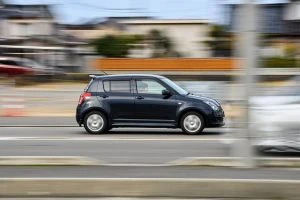
In the near future, Suzuki is looking to bring more hybrid technology into their mix of tricks. The current and soon to be available cars that Suzuki are delivering are exciting to look at, fun to drive, and are keeping pace with modern styling trends. Following Suzuki’s launch of the popular long-wheelbase (5-door) version of the boxy Jimny XL 4×4, Suzuki will be introducing at least another two new models in 2024. Hybrid technology is going to be part of Suzuki’s plan over the next year or two.
Despite the fact that CO2 gets pumped into horticultural green houses to enhance plant growth and production, hybrid vehicles will enable Australian new car buyers to enjoy genuinely fuel-efficient vehicles with low CO2 emissions for the first time. The fewer emissions, particularly of the toxic fume type that can cause respiratory problems, that get farted out into congested city environments the better, thus ensuring people can breathe easier as they leave the office to grab a coffee across the other side of the street or head around the block for a walk during lunch.
Suzuki’s lineup will continue to consist mainly of small cars and small SUVs (alongside Suzuki’s popular motorbikes, of course). There will continue to be the efficient petrol-only vehicles with their low emission rates; however, this year, mild-hybrid technology comes into effect. For those after a new car in 2024, Suzuki still offers buyers their brand-new Swift Hatchback. The 2024 Swift’s exterior looks familiar but is definitely smoother and sleeker than before and, inside the vehicle, there is bigger, more comprehensive touchscreen technology, along with an array of safety upgrades.
Of course, you could also buy yourself the fun little Suzuki Jimny 4×4 in three- or five-door form. These 4x4s are really popular, particularly for people needing a low-cost, go-anywhere type vehicle. These are truly capable 4WD SUVs that can happily tackle the toughest off-road terrain you can throw their way. The cute little Ignis, the dynamic Vitara range, and the stylish new S-Cross SUV are great efficient Suzuki vehicles that you can buy in 2024.
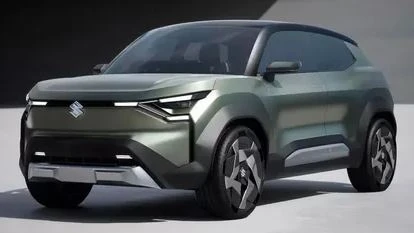
However, 2025/2026 will see Suzuki’s first electric vehicle (EV) model arrive in Australia: the Suzuki eVX. The small Suzuki EV SUV will be manufactured for numerous global markets, including Europe and Asia, with Australia’s introduction likely to be in 2025 or 2026. The Suzuki eVX concept was first revealed at Delhi’s Auto Show, India, in early 2023; it also received a public viewing at the Japan Mobility Show, Tokyo, in late October 2023. It is less than 4.5 metres long, about the same size as the recently facelifted Suzuki S-Cross SUV, and Suzuki suggests that the new eVX is targeting a 500 km driving range ahead of its launch. Equipped with dual electric motors, the Suzuki eVX is set-up well for delivering effective AWD traction should you require off-road action. Of course, Suzuki will also ensure it has fine on-road abilities as well. The eVX definitely looks futuristic and has that chunky, rugged look blended into the vehicle’s lines and shape.
Hybrids We’re Excited About For 2024
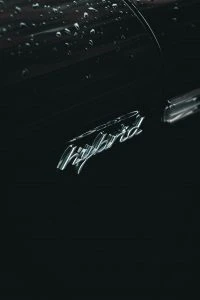
The pool of new hybrid vehicles from which a new car buyer can buy from has grown considerably over the last couple of years. The mainstay of hybrid manufacturers (e.g., Honda and Toyota) that have been in the hybrid game for over two decades are still providing us with some great vehicles; however, we have plenty of new hybrid options to choose from now.
Hybrids vehicles are vehicles that are powered by an internal combustion engine (ICE) but also have one or more electric motors to enhance a vehicle’s fuel economy, lower its overall emissions (gCO2/km), and add to the car’s performance. Hybrids also have a battery pack to source electricity for powering the electric motors. The battery is usually charged through regenerative braking and by the internal combustion engine, though some cars, like the Mitsubishi Outlander, are plug-in hybrids (PHEVs), meaning that their battery packs can also be charged up when not being driven, like a full electric vehicle (EV).
At the moment, hybrid vehicles are fantastic and make a lot of sense. For much of the time, they happily pootle about town on electricity alone (no emissions and no fuel usage). Then, when longer journeys are necessary (out of town) or if you need to tow something, a hybrid vehicle can make use of its ICE power and the country’s fuel network for taking you places far beyond the infrastructure for battery recharge.
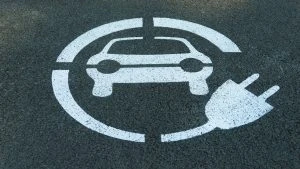
So, what new hybrid vehicles can we buy in 2024? I’ve endeavoured to break down the new hybrid vehicles according to their price bracket. There are actually over 70 new hybrid vehicles available today. See our review pages for more details on most of these, and we’re adding to our list of reviews all the time.
Up to $50,000
- GWM Haval Jolion SUV
- Hyundai Kona SUV
- Hyundai i30 Sedan
- GWM Haval H6 SUV
- Kia Niro SUV
- MG HS Plus SUV
- Subaru Forester SUV
- Toyota RAV4 SUV
- Toyota Yaris Cross Small SUV
- Toyota Camry Sedan
- Toyota Corolla Hatch
- Subaru Crosstrek SUV
- Toyota C-HR Small SUV
- Toyota Yaris Hatch
- Toyota Corolla Sedan
- Honda HR-V Small SUV
- Toyota Corolla Cross SUV
$50,000 to $75,000
- Peugeot 408 SUV
- Honda Civic Hatch
- Honda ZR-V SUV
- Honda CR-V SUV
- Mini Countryman SUV/Hatch
- Lexus NX SUV
- Toyota Corolla Cross SUV
- Subaru Forester SUV
- Toyota RAV4 SUV
- Honda Accord Sedan
- Nissan Qashqai SUV
- Toyota Camry Sedan
- Toyota Kluger SUV
- Cupra Leon Hatch
- Cupra Formentor SUV
- Lexus ES Sedan
- Lexus UX SUV
- Mitsubishi Outlander SUV
- Kia Sorento SUV
- Nissan X-Trail SUV
- GWM Tank 300 SUV
- Hyundai Santa Fe SUV
- Alfa Romeo Tonale SUV
- Mitsubishi Eclipse Cross SUV
- Kia Niro SUV
- MG HS Plus SUV
- Peugeot 308 Hatch
- Ford Escape SUV
$75,000 to 100,000
- Kia Sorento SUV
- Mazda CX-60 SUV
- Alfa Romeo Tonale SUV
- Peugeot 3008 SUV
- Volvo XC60 SUV
- Toyota Kluger SUV
- Peugeot 508 Wagon
- Lexus ES Sedan
- BMW 3 Series Sedan
- Peugeot 508 Hatch
- Mini Countryman SUV
- Lexus NX SUV
- Lexus RX SUV
$100,000 to $125,000
- Mercedes Benz GLC-Class SUV
- Lexus RX SUV
- Volvo XC60 SUV
- Audi Q5 SUV
- BMW X3 SUV
- Land Rover Discovery Sport SUV
- Land Rover Range Rover Evoque SUV
$125,000 to $150,000
- Jeep Grand Cherokee SUV
- Land Rover Defender SUV
- Land Rover Range Rover Velar SUV
- Volvo XC90 SUV
- Mercedes Benz E-Class Sedan
- Lexus RX SUV
$150,000 to $200,000
- Lexus LM People Mover
- Audi Q8 SUV
- Porsche Cayenne SUV
- BMW X5 SUV
- Land Rover Range Rover Sport SUV
$200,000 and Beyond
- Lexus LS Sedan
- Lexus LC Coupe
- Mercedes Benz AMG GT Coupe
- Bently Bentayga SUV
- McLaren Artura Coupe
- Bentley Flying Spur Sedan
- Ferrari SF90 Stradale Coupe
- Ferrari 296 GTB Coupe
- Ferrari SF90 Spider Convertible
Hilux Baby Ute a Champ

I think plenty of people would love to get their mitts on Toyota’s cute baby Hilux. Due to the Champ’s very no frills disposition, the cost of buying a new Toyota Champ Hilux would only be around $20k if you could buy one here in Australia. However, we’ll have to wait and see if the new Hilux Champ actually makes it down under.
Toyota have launched the new Hilux Champ in Thailand, and it was a vehicle that featured, for the first time, at the recent Japan Mobility Show. At this show, it was displayed in numerous configurations to show just how versatile the little Champ can be, and so it was demonstrated as an off-road vehicle, a coffee van, and even as an ambulance.
The Champ workhorse has plenty of variety in the way it can be built up, so, for example, there are long wheel-base (3085 mm) and short wheel-base (2750 mm) variants with two different cargo trays offered. There are numerous holes for bolting down whatever you like to the cargo tray, so you could easily use this as a camper, a stock carrier for the farm, or even as a coffee van. The Champ’s payload for the cargo deck is around the 1-tonne mark.
You can also opt for any of three engines to power the little Champ. Five-speed manual and six-speed automatic gearboxes are available to link with your specific engine of choice. A rather nice 2.4-litre turbo diesel is good for 110 kW of power and 400 Nm of torque. This would be an economical engine with loads of grunt for performing any demanding tasks with relative ease. A 2.0-litre petrol has 102 kW and 183 Nm of torque, while a bigger 2.7-litre petrol produces 122 kW and 245 Nm of torque.
Luxury isn’t the Champ’s forte, so even electric windows are found only on the higher-spec models (not that this is a bad thing – I kind of miss having roll-down windows that work when the key’s out sometimes). The seats are upholstered in black vinyl, and there are a few safety features like seat belts, a strong structure, and two airbags. There is no infotainment system on-board when sold new; however it does come with two speakers, for which you can access, probably via the driver’s instrument panel.
The new Toyota Hilux Champ takes me back to the solid and reliable little 2WD Hilux and Nissan Navara utes of the eighties and early nineties. These were no frills workhorses, but they were very dependable and robust work companions. And yes, I wouldn’t mind having one.
The Nissan Hyper Force Concept Car
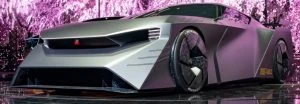
There would be little debate over whether a Nissan GT-R is a legendary supercar or not. It has been one of the most exciting cars of the last two to three decades, having even set a record on the Nürburgring racetrack of 7:08.68 min in 2013, which was achieved by the Nissan GT-R NISMO.
Recently, the Nissan Hyper Force concept car stunned the crowds at a car show in Japan. Could this concept potentially be the next new Nissan GT-R supercar?
The Nissan Hyper Force is an all-electric beast with a seriously brazen design suggesting time warp speeds! In the car’s layout is an application of some clever revolutionary solid-state batteries that enable the supercar’s output to power up to 985 kW. That’s almost 600 kW more than the current GT-R! It’s also good to see that solid-state batteries are starting to break out of the laboratory and into actual vehicles, as they have better safety performance. However, these solid-state batteries are inside something that’s got that little hit of adrenaline. This electric vehicle is electrifying.
With this level of output, the Nissan Hyper Force Concept car is carefully aerodynamically designed to ensure the air is pushed over the car to force it down on the road. In order to achieve the required levels of downforce, there are active winglets up the front end of the car to help channel air over the car, as well as a massive air scoop in the lower bumper, and an array of active fins for air manipulation. If you look at the back of the vehicle, the telltale twin LED taillight clusters are very typical of the Nissan Skyline GT-R. The massive wheel arches on the AWD machine look really spectacular, hiding what must be some serious rubber tyre profiles. If I were making a Batman movie, I’d cast this vehicle as the latest iteration of the Batmobile.
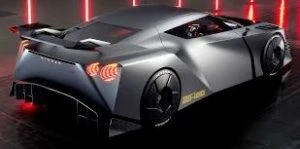
The doors open upwards and forwards in a gullwing-like action. Once the doors are opened, the onlookers are presented with a stunningly wild interior, featuring Lamborghini-crazy styling that is incredibly futuristic, offering sizzling red LED lighting vibes for high-speed driving modes. Gentler GT modes light up the interior in a blue colour. There are plenty of information displays and stylish graphics, as you’d expect. The interior styling continues the edgy, angular diagonal lines of the exterior, giving a Batmobile vibe. And did I see harness style seatbelts in there?
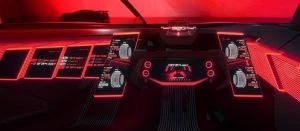
The Nissan Hyper Force concept was at the Japanese car show to inspire people, and to give them a taste of what a new roadgoing Nissan supercar (potentially GT-R) of the future might look like. This is seriously cool! Here’s hoping that we’ll see some of the ideas trickling down. I particularly like the idea of the ambient lighting changing with the driving style, so I hope that we see that one in upcoming Nissan models. I’d also like to see the harness-style seatbelts making their way into regular cars, though they’d take a bit of getting used to, especially for a women (but they could easily be an improvement over the three-pointers we’re used to).
Find out more and have a drool in the official promo video from Nissan: